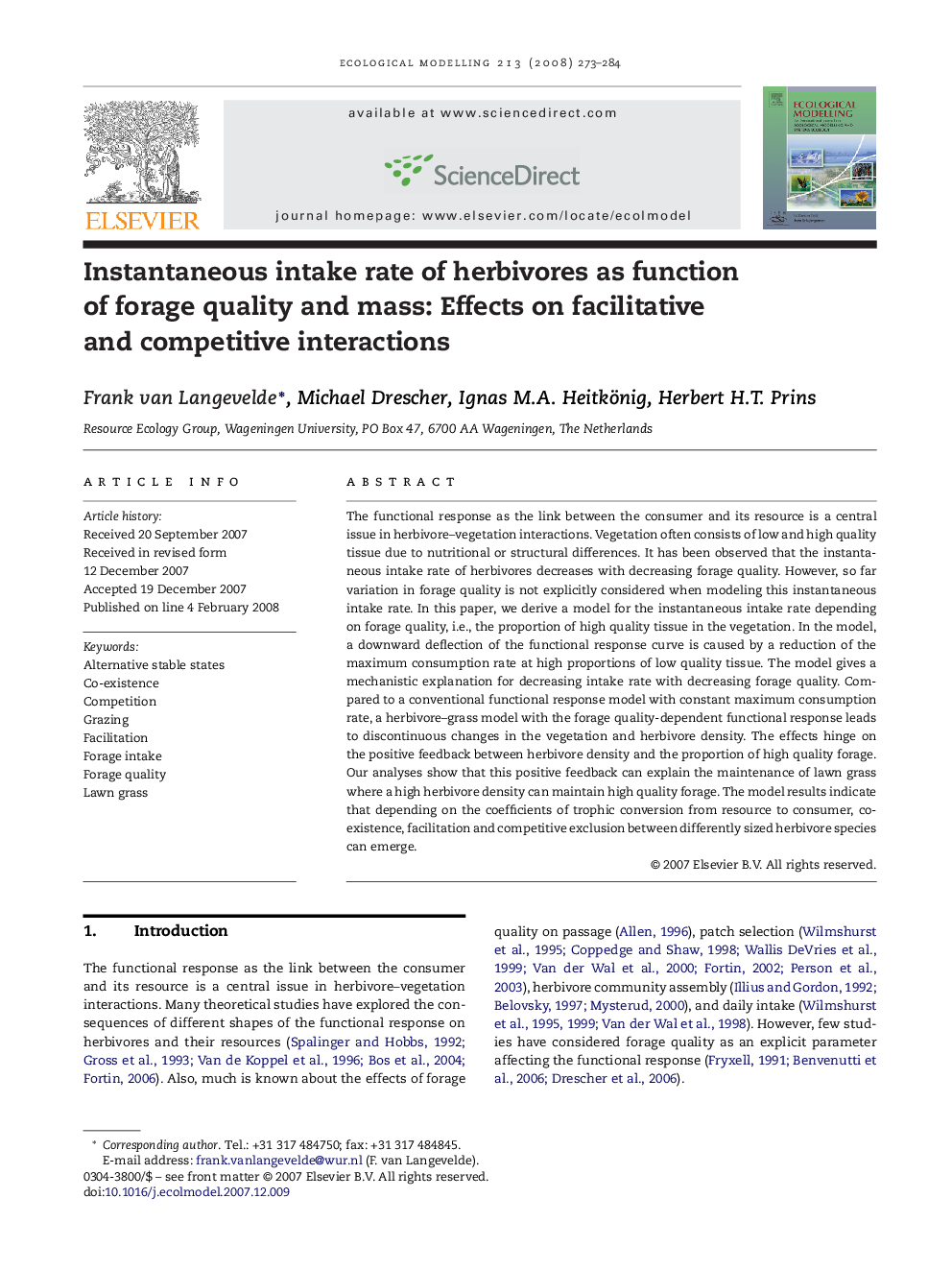| Article ID | Journal | Published Year | Pages | File Type |
|---|---|---|---|---|
| 4378206 | Ecological Modelling | 2008 | 12 Pages |
Abstract
The functional response as the link between the consumer and its resource is a central issue in herbivore-vegetation interactions. Vegetation often consists of low and high quality tissue due to nutritional or structural differences. It has been observed that the instantaneous intake rate of herbivores decreases with decreasing forage quality. However, so far variation in forage quality is not explicitly considered when modeling this instantaneous intake rate. In this paper, we derive a model for the instantaneous intake rate depending on forage quality, i.e., the proportion of high quality tissue in the vegetation. In the model, a downward deflection of the functional response curve is caused by a reduction of the maximum consumption rate at high proportions of low quality tissue. The model gives a mechanistic explanation for decreasing intake rate with decreasing forage quality. Compared to a conventional functional response model with constant maximum consumption rate, a herbivore-grass model with the forage quality-dependent functional response leads to discontinuous changes in the vegetation and herbivore density. The effects hinge on the positive feedback between herbivore density and the proportion of high quality forage. Our analyses show that this positive feedback can explain the maintenance of lawn grass where a high herbivore density can maintain high quality forage. The model results indicate that depending on the coefficients of trophic conversion from resource to consumer, co-existence, facilitation and competitive exclusion between differently sized herbivore species can emerge.
Keywords
Related Topics
Life Sciences
Agricultural and Biological Sciences
Ecology, Evolution, Behavior and Systematics
Authors
Frank van Langevelde, Michael Drescher, Ignas M.A. Heitkönig, Herbert H.T. Prins,
